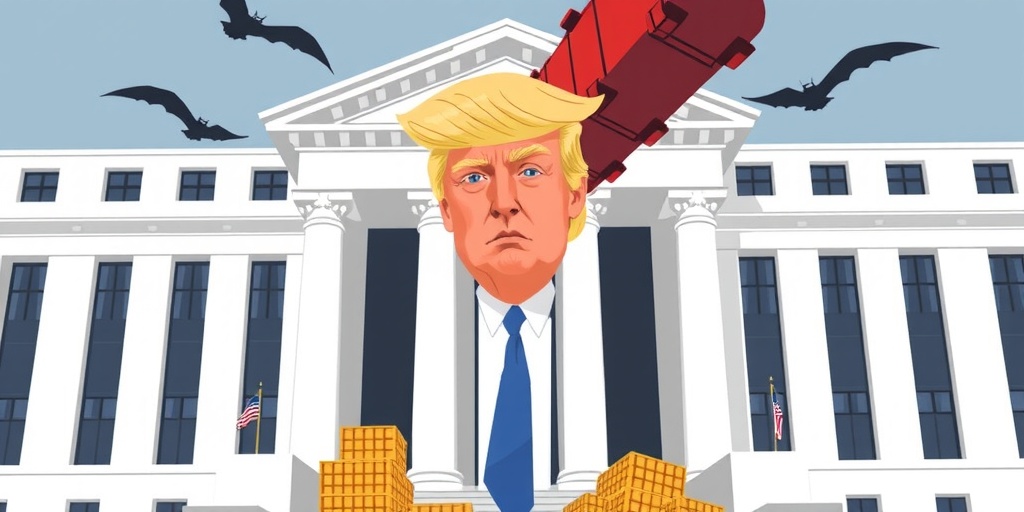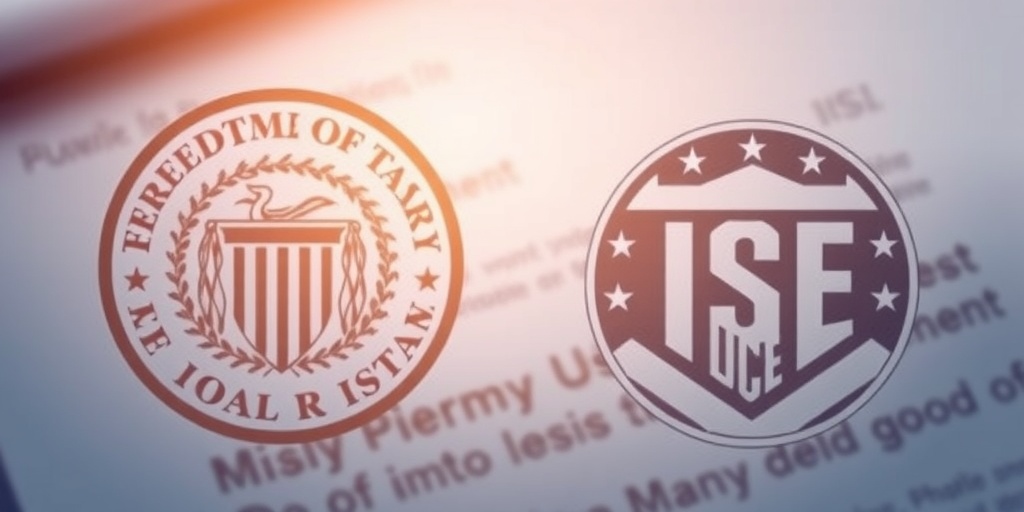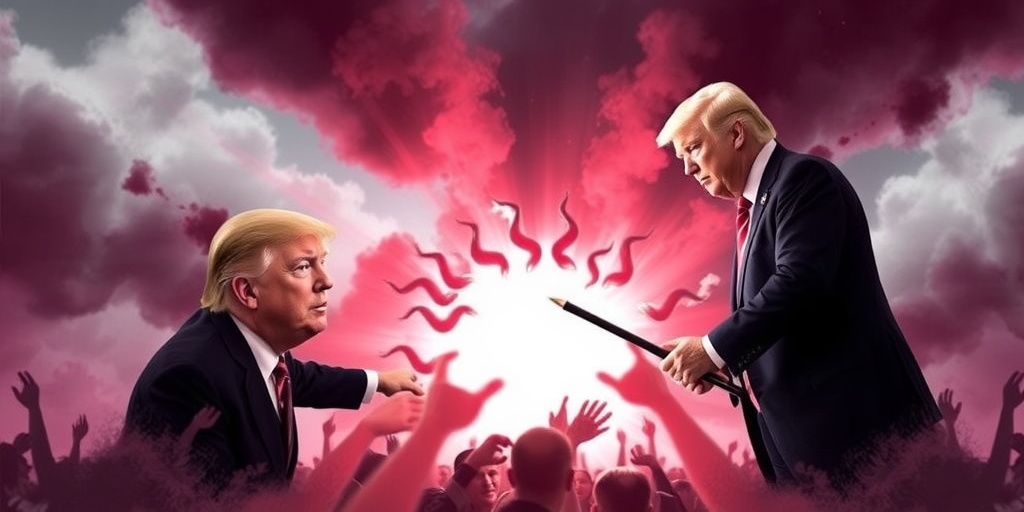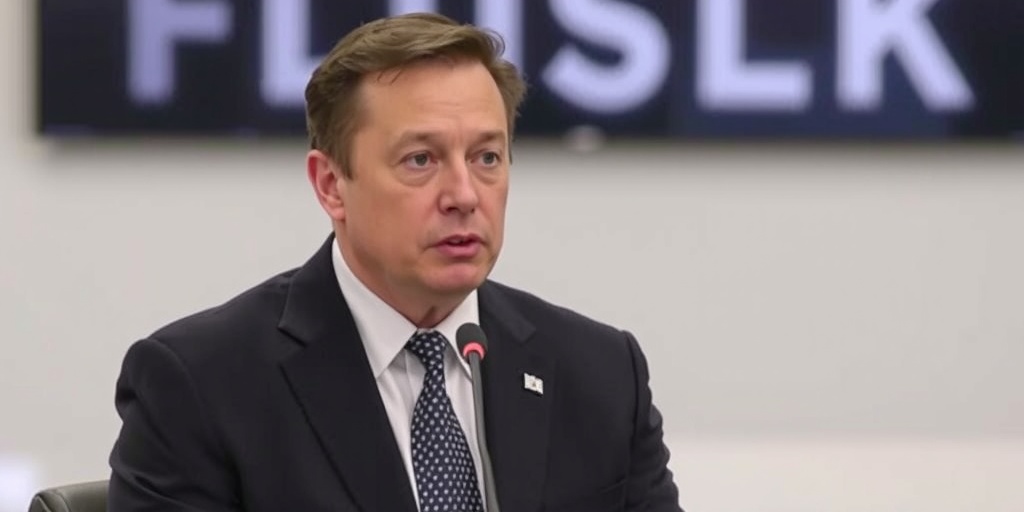Now Reading: Will the Fed Overlook Trump’s Tariffs?
-
01
Will the Fed Overlook Trump’s Tariffs?
Will the Fed Overlook Trump’s Tariffs?

Economic Impacts of Tariffs on Federal Reserve Policy
As former President Trump’s administration advances its ambitious agenda to revamp the global trade landscape through significant tariffs, questions linger among Federal Reserve officials regarding how these initiatives will influence the central bank’s strategies to reduce interest rates. The dynamic nature of trade policies and their potential economic fallout has become a focal point of discussion among key figures at the Fed, especially as they deliberate their approach to interest rates amid changing economic conditions.
On a recent occasion, Christopher J. Waller, one of the influential governors at the Federal Reserve, expressed confidence that Trump’s trade policies would not disrupt the central bank’s goal of managing inflation effectively. In remarks delivered during an event in Australia, Waller indicated he believes the impact of imposed tariffs on consumer prices would be modest and temporary. He stated, “My base-line view is that any imposition of tariffs will only modestly increase prices and in a nonpersistent manner,” implying that the Fed can overlook these effects when formulating monetary policy.
Nevertheless, concerns persist among economists that these tariffs, effectively taxes on American consumers, could lead to a rise in prices and potentially slow economic growth in the United States. Waller acknowledged that the effects of tariffs might surpass initial forecasts, especially based on their structure and implementation. However, he framed his perspective positively, suggesting that other economic policies might mitigate price increases caused by tariffs, thereby exerting downward pressure on inflation.
Waller’s insights are particularly significant given his role as one of the seven members of the Federal Reserve Board of Governors, who participate in voting on policy decisions during meetings. Trump’s economic agenda encompasses more than just tariffs; it also emphasizes increased domestic energy production, deregulation, and tax reductions, as well as aggressive immigration policies and attempts to curb government spending.
Amidst these developments, Fed officials have adopted a cautious stance regarding the long-term implications of these policies on the economy and interest rates. Current borrowing costs linger between 4.25 and 4.5 percent, as the Fed refrained from implementing further cuts recently in a bid to gain a clearer understanding of inflation trends.
This situation is reminiscent of the trade tensions experienced during Trump’s first presidency, specifically in 2018. However, the economic context today differs substantially. In 2018, inflation was relatively low, frequently below the Fed’s 2 percent target, and interest rates were around 2 percent. The economic growth outlook was also bleak, prompting the Fed to take preemptive measures, which led to several rate cuts by the end of 2019.
Waller’s current approach suggests that if concerns regarding tariff-induced growth disruptions overshadow possible temporary spikes in consumer prices, the Fed could adopt a similar "looking through" strategy in its policymaking. However, the lingering effects of the recent inflation crisis, which represented the most severe rise in prices in about four decades, have left consumers apprehensive about future price increases—a sentiment complicating the Fed’s policy options.
Recent Consumer Price Index reports have revealed troubling signs, as inflation pressures once again surged. Skyrocketing grocery prices, especially a notable 15 percent increase in egg prices due to a bird flu outbreak, along with rising energy costs, have spurred anxiety among Fed officials. Even after excluding volatile items, core inflation metrics showcased the fastest monthly growth seen in nearly two years, further heightening the urgency of the Fed’s considerations.
Yet, the release of the Producer Price Index suggested inflation might not be as alarming as initially feared, providing some relief for Fed policymakers. Waller described the inflation data from the latest reports as "mildly disappointing" but maintained that it remains significantly above the Fed’s target, noting "excruciatingly slow" progress in controlling it.
Amid all these data fluctuations, the Fed acknowledges certain recurring patterns, such as higher consumer prices in January, which have historically occurred in nine out of ten instances over the past decade. Consequently, Waller suggests caution in drawing conclusions from recent data, indicating the potential for seasonal variations that might obscure underlying inflation trends.
In light of these complexities, Waller expressed that if the current stagnation in progress is merely a temporary phase, further policy easing could be warranted. However, he emphasized the necessity for clarity on how the Trump administration’s economic policies will materialize.
In a similar vein, Michelle Bowman, another Fed governor, advocated for a “cautious and gradual” approach to future rate cuts while seeking definitive signals regarding the administration’s strategies. She noted the importance of a more comprehensive understanding of these policies to gauge their impact on the economy in the coming months.
Despite some concerns, there seems to be growing optimism among Fed officials, including Patrick Harker, president of the Philadelphia Fed. On Monday, Harker expressed hope that inflation could eventually decline, allowing for long-term interest rate reductions. However, he acknowledged the uncertainty surrounding the overall economic landscape, emphasizing that various elements could impact the Fed’s trajectory moving forward.
As markets recalibrate their expectations regarding interest rate adjustments, the consensus among investors appears to have shifted, with futures indicating only a modest quarter-point reduction in December. This cautious sentiment reflects broader concerns that Trump’s policies could ultimately exacerbate inflationary pressures.
In summary, as the Federal Reserve navigates the intricate landscape shaped by Trump’s economic programs, the central bank remains vigilant, assessing how these evolving dynamics will influence decisions on interest rates and inflation management in the foreseeable future. The interplay of tariffs, consumer prices, and economic growth will continue to be at the forefront of discussions as policymakers tread carefully in a complex economic environment.
Stay Informed With the Latest & Most Important News
Previous Post
Next Post
-
 01New technology breakthrough has everyone talking right now
01New technology breakthrough has everyone talking right now -
 02Unbelievable life hack everyone needs to try today
02Unbelievable life hack everyone needs to try today -
 03Fascinating discovery found buried deep beneath the ocean
03Fascinating discovery found buried deep beneath the ocean -
 04Man invents genius device that solves everyday problems
04Man invents genius device that solves everyday problems -
 05Shocking discovery that changes what we know forever
05Shocking discovery that changes what we know forever -
 06Internet goes wild over celebrity’s unexpected fashion choice
06Internet goes wild over celebrity’s unexpected fashion choice -
 07Rare animal sighting stuns scientists and wildlife lovers
07Rare animal sighting stuns scientists and wildlife lovers





















